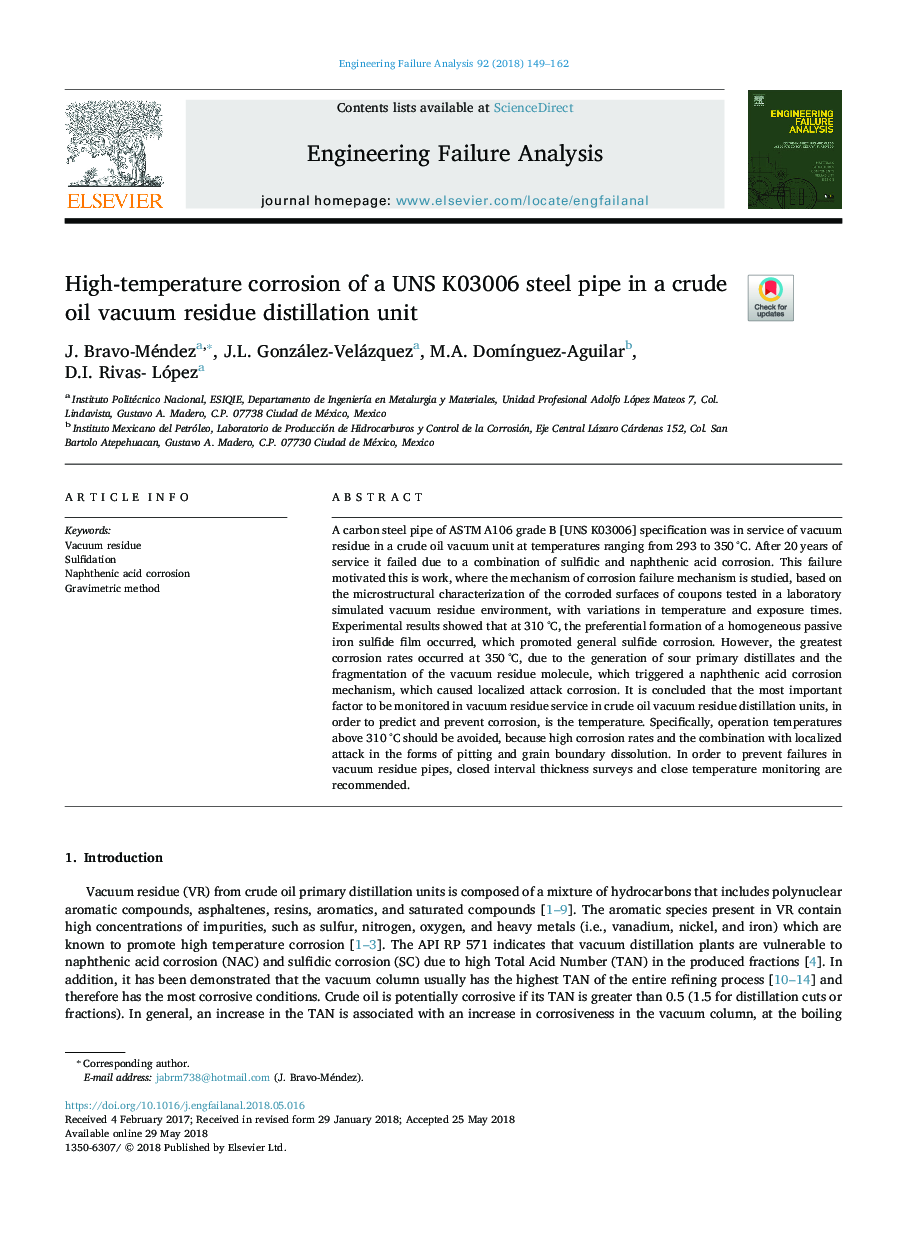| Article ID | Journal | Published Year | Pages | File Type |
|---|---|---|---|---|
| 7167054 | Engineering Failure Analysis | 2018 | 14 Pages |
Abstract
A carbon steel pipe of ASTM A106 grade B [UNS K03006] specification was in service of vacuum residue in a crude oil vacuum unit at temperatures ranging from 293 to 350â¯Â°C. After 20â¯years of service it failed due to a combination of sulfidic and naphthenic acid corrosion. This failure motivated this is work, where the mechanism of corrosion failure mechanism is studied, based on the microstructural characterization of the corroded surfaces of coupons tested in a laboratory simulated vacuum residue environment, with variations in temperature and exposure times. Experimental results showed that at 310â¯Â°C, the preferential formation of a homogeneous passive iron sulfide film occurred, which promoted general sulfide corrosion. However, the greatest corrosion rates occurred at 350â¯Â°C, due to the generation of sour primary distillates and the fragmentation of the vacuum residue molecule, which triggered a naphthenic acid corrosion mechanism, which caused localized attack corrosion. It is concluded that the most important factor to be monitored in vacuum residue service in crude oil vacuum residue distillation units, in order to predict and prevent corrosion, is the temperature. Specifically, operation temperatures above 310â¯Â°C should be avoided, because high corrosion rates and the combination with localized attack in the forms of pitting and grain boundary dissolution. In order to prevent failures in vacuum residue pipes, closed interval thickness surveys and close temperature monitoring are recommended.
Related Topics
Physical Sciences and Engineering
Engineering
Industrial and Manufacturing Engineering
Authors
J. Bravo-Méndez, J.L. González-Velázquez, M.A. DomÃnguez-Aguilar, D.I. Rivas- López,
